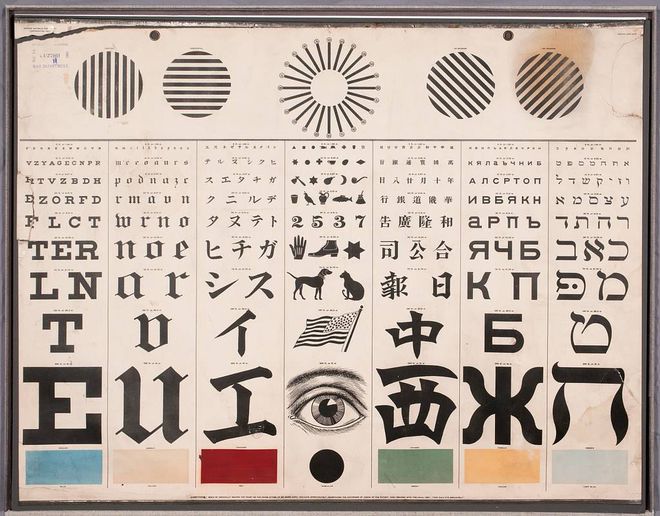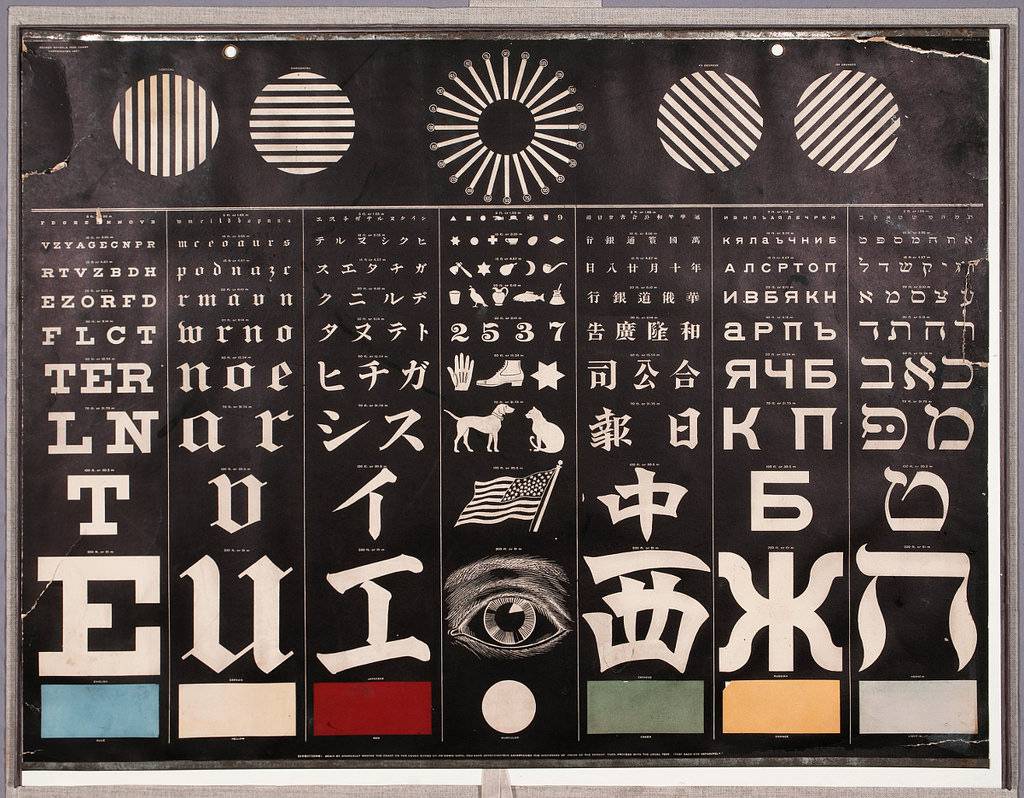112 years ago, optometry was a growing profession. In diverse cities like San Francisco, however, the eye chart commonplace in western countries today could not suffice.
Enter George Mayerle’s multilingual eye examination chart.

The chart was a culmination of his many years of practice and, according to Mayerle, its distinctive international angle served also to reflect the diversity and immigration which lay at the heart of the city in which he worked. At the time it was advertised as “the only chart published that can be used by people of any nationality”.
Stephen P. Rice writes in Hidden Treasure:
The “international” chart is an artifact of an immigrant nation—produced by a German optician in a polyglot city where West met East (and which was then undergoing massive rebuilding after the 1906 earthquake)—and of a globalizing economy. One advertisement promoted it as “the only chart published that can be used by people of any nationality,” such as might be needed by a practitioner in almost any American city. Another ad, which appeared around the same time, touted it as “the only chart. . .that can be used equally well in any part of the world.”
—Page 136, Hidden Treasure. Published by the National Library of Medicine, Bethesda. ISBN: 978-0-922233-42-7.
The concept is so cool. It seems like a no-brainer, right? I’m surprised we don’t see more of this kind of thing in optometry offices today.
